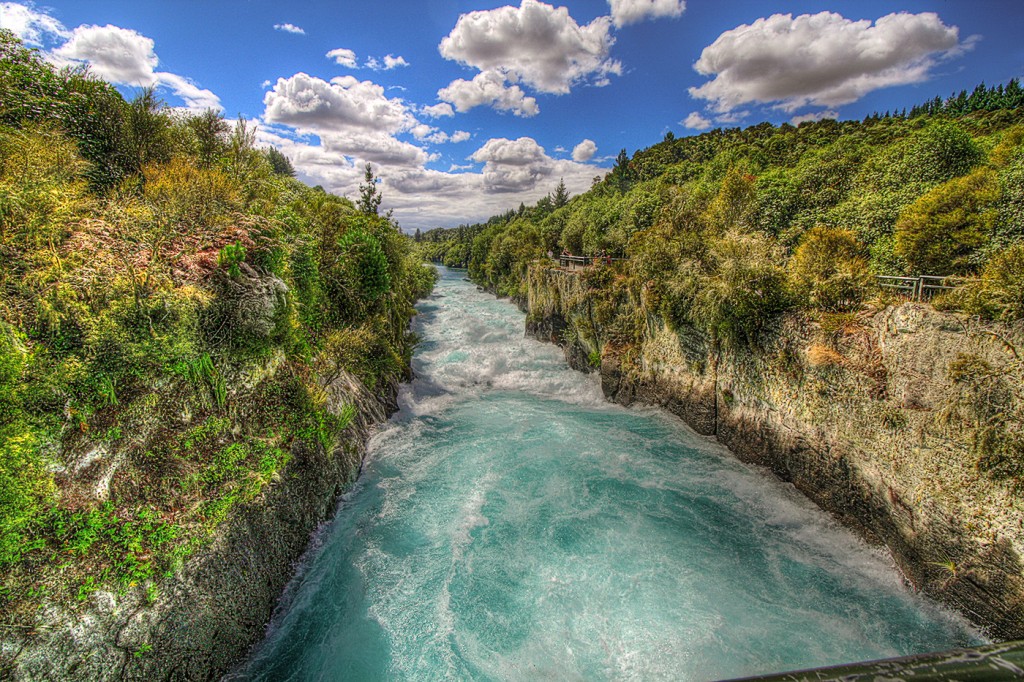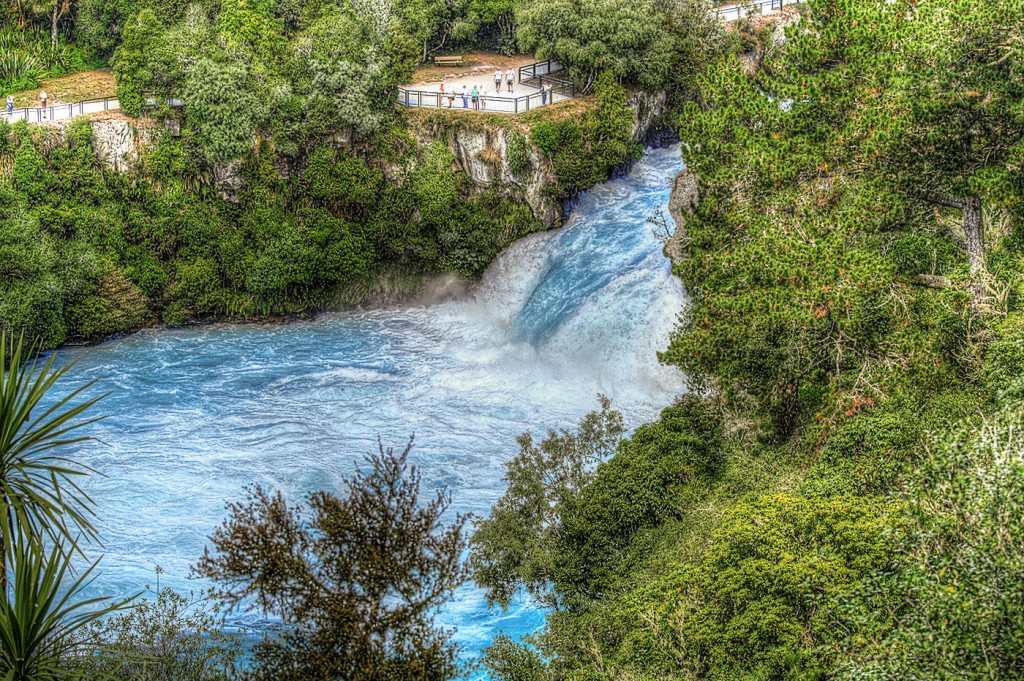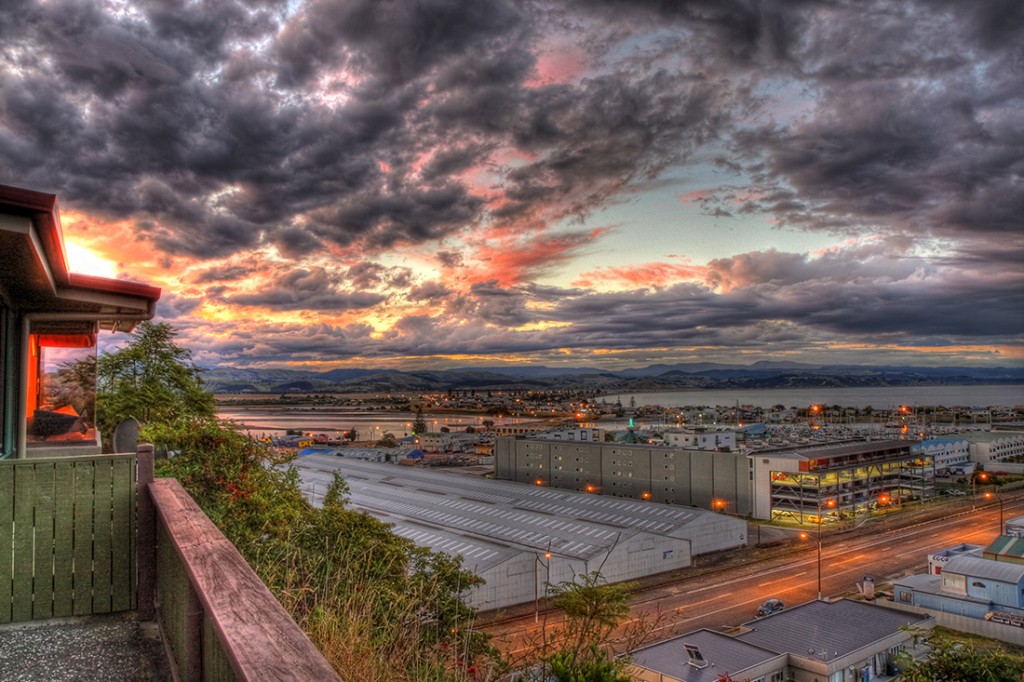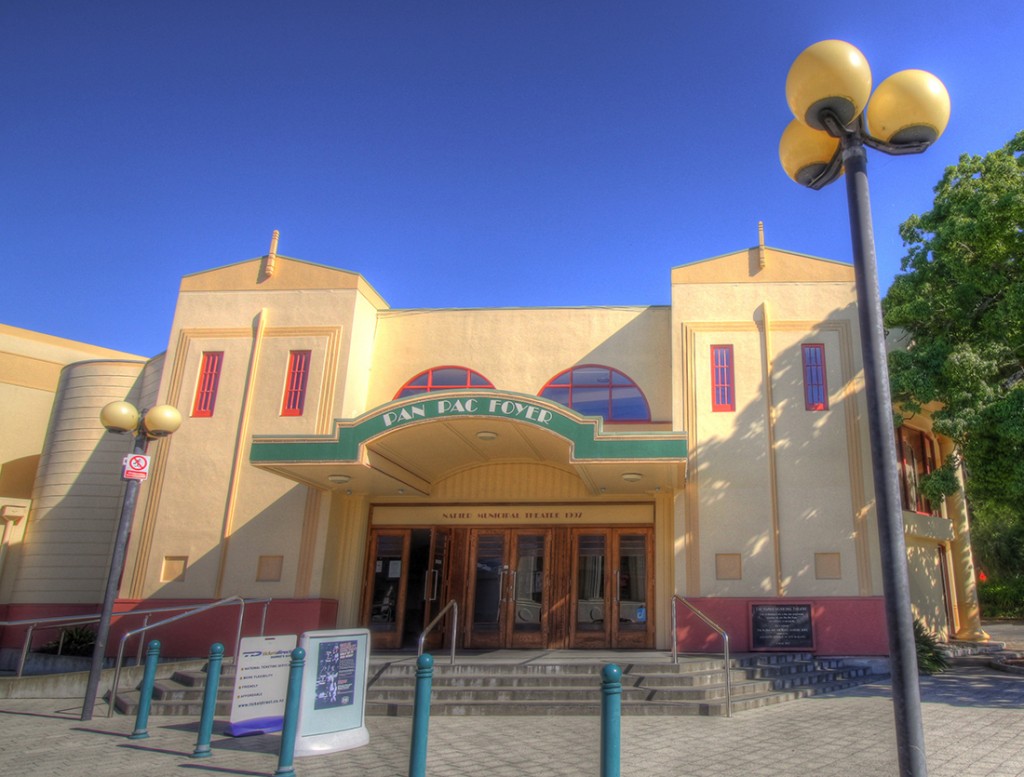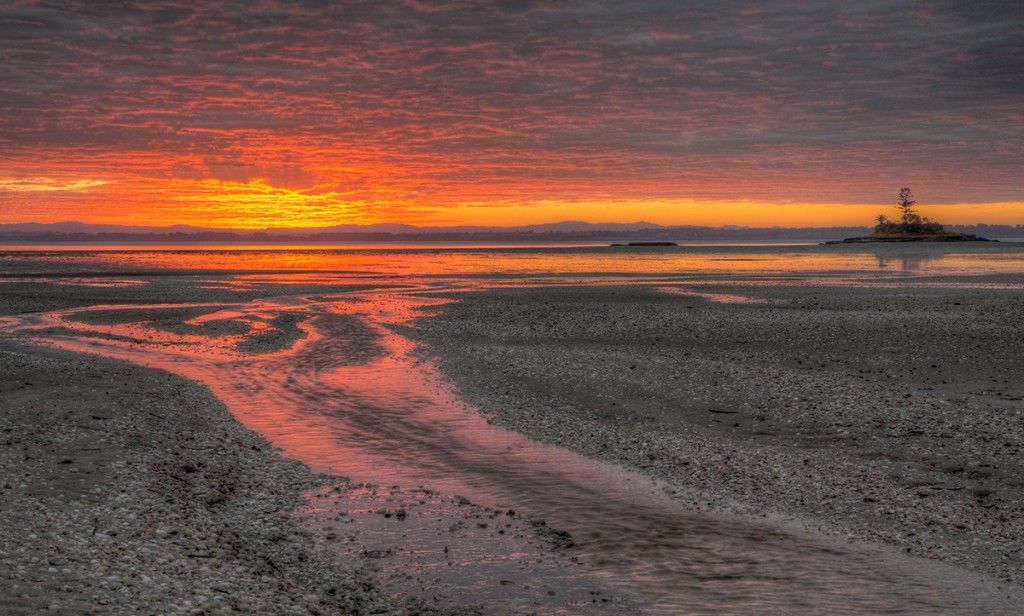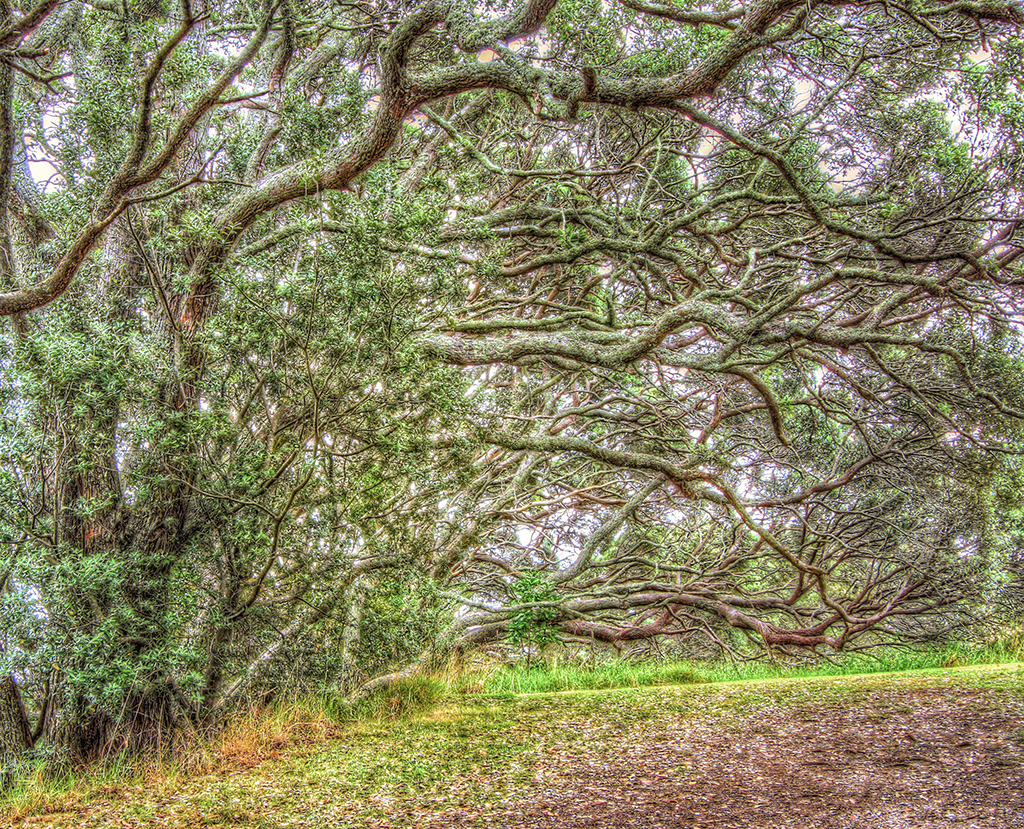Archive for March, 2010
Huka Falls
Huka Falls is a series of waterfalls on the Waikato River, about 10km from Lake Taupo. A few hundred metres upstream from the Huka Falls, the Waikato River narrows from roughly 100 metres across into a narrow canyon only 15 metres across. It looks like it’s man-made, but actually it’s entirely natural. The canyon is carved into lake floor sediments laid down before Taupo’s big eruption 26,500 years ago. (And that was one mean eruption – it formed Lake Taupo which is 46kmx33km or 30milesx20miles)
This is a picture of the canyon, taken from the bridge that goes across:
One striking thing about the falls is how blue the water is. I don’t know if this is just the reflection of the blue sky, or whether there are disolved minerals, but the water looked freaky blue the day I was there.
The largest fall is at the bottom of the series of waterfalls
Huka Falls is well known for the Huka Falls Lodge, one of New Zealand’s most exclusive and expensive hotels. Rates start at about nz$2000 per night (us$1400) and go up to nz$12,340 per night (us$8600). So I guess it must be pretty amazing..
HDR Spotting Invite Codes
I have some of these if anyone is interested. Please send me a link to some of your pictures.
Sponsored Links:
[ad code=2 align=center]
Napier
I went to stay in Napier for a couple of days and managed to take quite a good crop of pictures. The weather was ideal, glorious end-of-summer light.
We stayed at a beautiful house that sits on top of a hill overlooking the port area; this was the view from the balcony.
Napier is a busy port; it ships wood and paper. It’s also the fruit basket of New Zealand and has many wineries.
It’s also famous worldwide for it’s Art Deco buildings. In 1931 it was devastated by an earthquake, 7.8 on the Richter scale (which is quite a decent size, more than 20 times the size of the recent Haiti earthquake).
Many of the buildings were destroyed and when they were rebuilt, used the prevalent Art Deco style. Now that Art Deco has become popular again, Napier is an Art Deco tourist destination. Here’s a classic example:
This theatre was completely destroyed in the earthquake. It was rebuilt and reopened in 1938. It was renovated in 1997.
HDR Spotting Invite Codes
I have some HDR Spotting invite codes; email me if you’d like one (send a link to your Flickr page or image portfolio). My email is bob at beausoft dotcom
Sunrise at Awhitu Regional Park
The other day I went out to catch the sunrise at a lovely beach I’d recently discovered. It’s along the Awhitu regional park, a wetlands restoration project bordering on the Manakau harbour. Here’s a shot taken just a couple of minutes before sunrise, when the colours are at their most intense.
The small island you can see on the right is Kauritutahi island. I felt a bit sorry for this island as it’s only an island at high tide..
Autobracketing : my camera, as with most Canons, only takes 3 autobracketed shots. But you can specify the exposure in 1/2 or 1/3 stops. So you can have -2, 0 and +2. Or -1.5, 0 +1.5. The maximum range is +-2 stops. And for nearly every conceivable shot this is sufficient, even a shot looking directly into the sun, with shady shadows, you can capture the whole scene OK. Sometimes you need to apply some exposure compensation.
Nikon users (I learnt from Trey) can only autobracket in 1-stop intervals. But their cameras can autobracket 5 or more shots.
Now it amuses me greatly when I read on some sites that some picture has been created from “9 autobracketed images”. Why? “Because they can” is the only real reply I think. Even -2,0,+2 is a bit much for many uses..
Often the image that accompanies such a shot does not contain any more dynamic range that can be captured with a single shot!
Anyway, in the spirit of “overdoing things just because you can” I present a *triple* tone mapped image!
It’s possible with Photomatix to re-tonemap and image after the initial tone mapping. This can give you nice results with a more even histogram. But it also often gives more noise and freaky colours. It’s easy to do; after you have created your HDR image and tone mapped it the first time (ie after the final image comes up when you click “Process”), you press Control-T, or do Process >> Tone Mapping from the main menu.
The shot above I took one step further and tone mapped three times. I could get away with this on the particular image as the colours were subdued to start with, and I felt that they needed some punch.
HDR Spotting Codes
I have some HDR spotting invite codes if anyone is interested. Drop me an email to bob at beausoft dot com with a link to your flickr page or other portfolio. I need to check out your work before inviting.
New Camera
Well not really. Or not yet. But I really have my eye on a Canon EOS 7D. If you can help me reach my goal here in any way I’d really appreciate it.. It’s such a great camera, and will no doubt improve the pics on this site. Ideally you’d send me money, but there are easier ways that don’t cost you anything..
Sponsored Links:
[ad code=2 align=center]
